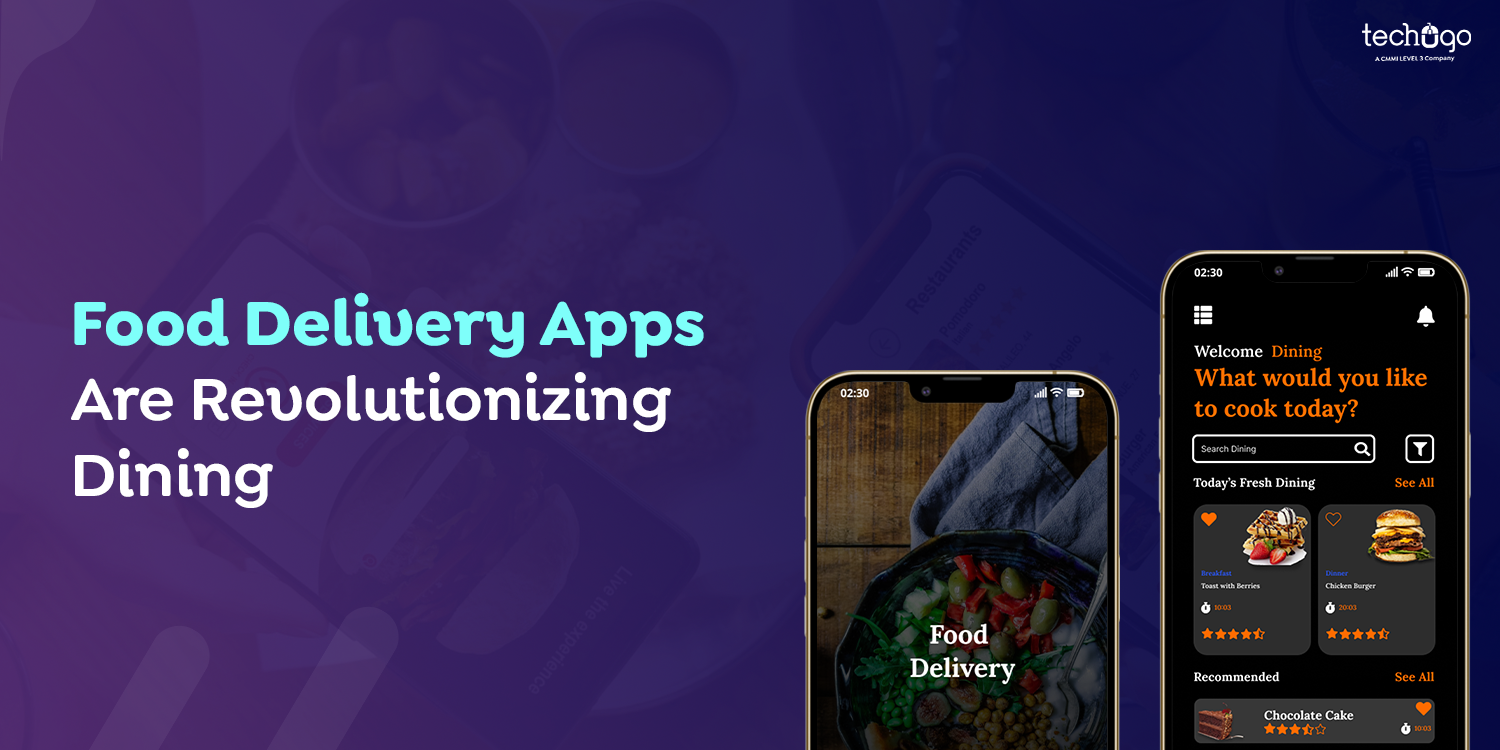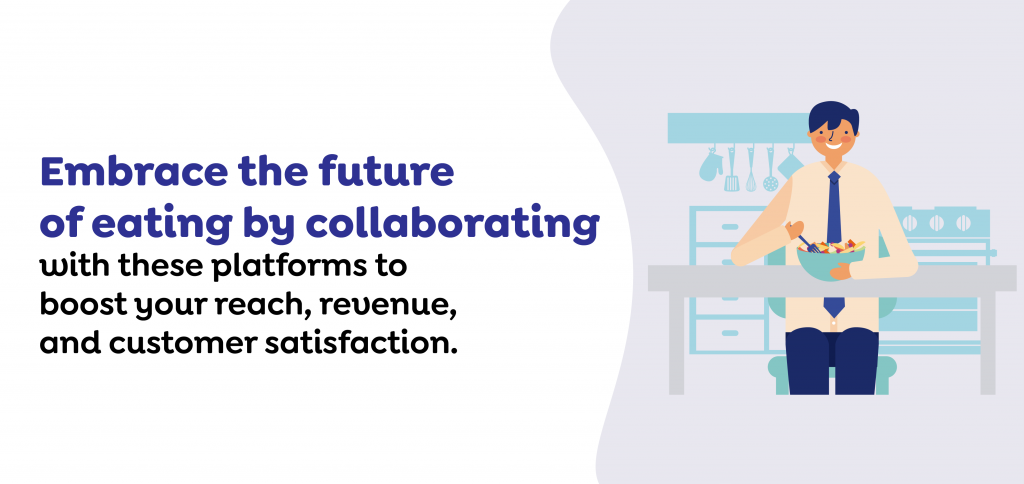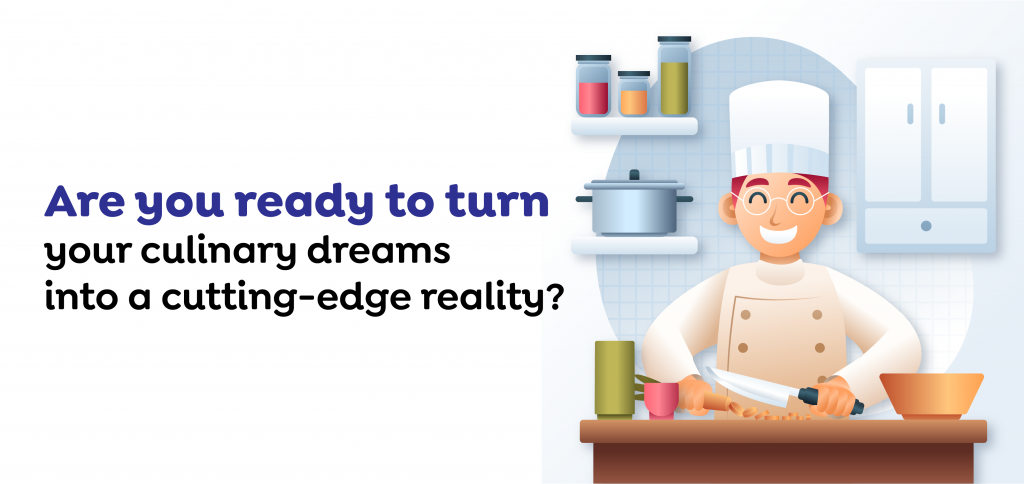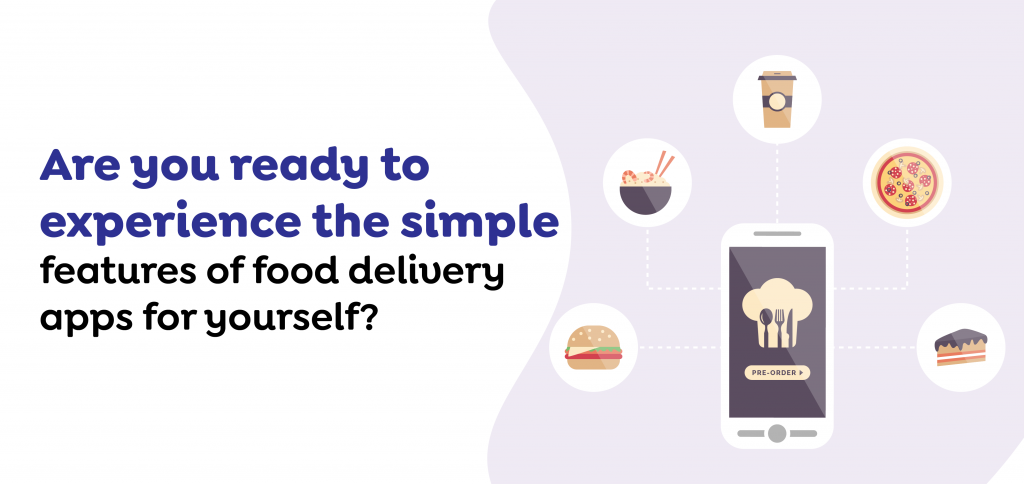2 Nov 2023
Updated on July 8th, 2024
Food Delivery Apps Are Revolutionizing Dining
Matthew Connor

Convenience is vital in today’s fast-paced society, and this is especially true when it comes to gratifying our gastronomic demands. The introduction of food delivery apps has transformed the way we order and consume our favorite meals. These applications have not only changed the restaurant sector, but they have also become a part of our daily lives.
Developing apps is an excellent place to start if you want to create a business. With a solid user base already in the area, these programs will continue to entice their clients with increasingly enticing and user-friendly features in the future. Are you stuck? Don’t be alarmed. We’ve put together thorough information on how an Android app development business can assist you and how they can assist you in developing an app. Read-on!
When you’ve decided to create your apps with the help of an Android app development company that can give you with the best mobile app, you must first understand why you should invest in food delivery apps. Instead of analyzing your audience and learning what they want from your project, focus on why you invest in a food delivery app and how it will benefit you.
Why Should Invest In Food Delivery App?
Investing in food delivery applications may be a profitable investment for a variety of reasons. This industry’s emergence, particularly in recent years, has proved its potential for growth and profitability. Here are a few strong reasons why you should invest in meal delivery apps:
- Strong Market Growth: Over the last decade, the food delivery business has shown constant and strong growth. With their hectic schedules and growing need for convenience, more individuals are turning to meal delivery apps to satiate their gastronomic demands. This pattern is likely to persist, particularly in metropolitan locations where time is of importance.
- Consumer Behaviour Changes: The COVID-19 epidemic has expedited the uptake of food delivery services. Many people who used to eat out switched to ordering in, and this trend is likely to continue long after the epidemic has passed. Consumers are expected to continue utilizing meal delivery apps as they become acclimated to their ease.
- Diverse Revenue Streams: Food delivery applications have many income streams. These platforms make money by charging delivery fees, partnering with restaurants, offering subscription services, advertising, and other means. Diversified sources of revenue can assist in managing risks connected with changes in customer behavior or competition.
- Partnerships with Restaurants: Food delivery apps work with a broad range of restaurants, from small local establishments to large international brands. This large network exposes investors to a wide range of culinary enterprises as well as the opportunity to capitalize on the popularity of well-known brands.
- Technological Innovation: Technological innovation is constantly transforming the food delivery sector. Improved logistics, AI-powered suggestions, and the integration of contactless payment methods can benefit investors by improving user experiences and efficiency.
- Opportunities for Global Expansion: Many meal delivery apps have grown abroad, allowing investors to enter global marketplaces. Even in emerging economies, expanding to new locations gives opportunities for diversification and growth.
- Scalability: Food delivery applications are extremely scalable companies. As the user base expands, they may extend their operations with little investment in physical infrastructure, making it simpler to achieve economies of scale.
- Data-Driven Insights: These systems capture a large amount of information about customer preferences and behavior. Investors may use this data for targeted marketing, menu optimization, and general service quality improvement.
- Competitive Advantage: The most successful meal delivery apps have built tremendous brand awareness and client loyalty. Investing in a well-established platform with a competitive edge can bring long-term stability and development possibilities.
However, it is vital to highlight that investing in food delivery apps has risks such as fierce competition, regulatory obstacles, and changing customer tastes. Conduct rigorous study before investing, evaluate the competitive landscape, and consider your risk tolerance. Seek assistance from financial specialists as well to make educated investment selections based on your financial objectives and circumstances.
If you want to know how the Food delivery app can benefit the business, scroll down!!
How The Food Delivery Apps Can Benefit in Business

Businesses, particularly restaurants and food outlets, may benefit from meal delivery applications in a variety of ways. These applications have evolved into critical tools for expanding client reach, boosting revenue, and improving customer happiness. Here are some ways that meal delivery apps might help businesses
- Increased consumer Reach: Food delivery applications link establishments with a large consumer base that would otherwise be inaccessible. Users may find and order from a wide variety of eateries, including ones they might not have known about otherwise.
- Increased income: Food delivery applications have the potential to increase a restaurant’s income significantly. They create a new revenue stream by letting companies earn money from delivery and takeaway orders in addition to dine-in consumers. This variety of income sources can aid in revenue stabilization, particularly during challenging times.
- Improved Efficiency: Food delivery applications improve efficiency by streamlining the ordering procedure. Orders are placed digitally, which reduces the possibility of mistakes while accepting orders over the phone. This efficiency results in speedier service and a more pleasant client experience.
- Enhanced Customer Loyalty: Apps frequently include loyalty programs, discounts, and promotions to promote repeat business. Customer loyalty can also be boosted with the option to bookmark favorite orders and receive personalized suggestions.
- Savings: While there may be expenses involved with collaborating with food delivery apps, it can still be less expensive than maintaining a specialized delivery fleet and infrastructure. This might be a more cost-effective choice for many smaller establishments.
- Flexibility and Adaptability: Food delivery applications enable you to manage orders and change operations with ease. Restaurants can simply alter menus, change hours of operation, or suspend service during high periods or crises.
- Contactless Payment Methods: In today’s world, contactless payment methods are a must. Food delivery applications provide a variety of safe payment solutions, decreasing the need for cash transactions.
- Customer Feedback and Reviews: Apps frequently contain features that allow users to post ratings and reviews. While bad reviews can have an impact on a company, they also present an opportunity for restaurants to address consumer complaints and enhance their products.
- Marketing Options: Food delivery apps frequently provide marketing and advertising options on their platforms, allowing businesses to promote their brand and menu items to a larger audience.
- Compliance Assistance: Some food delivery apps offer information and assistance to assist restaurants in meeting regulatory standards for food safety, packaging, and delivery.
Food delivery apps may be an essential part of a restaurant’s business strategy, increasing income, efficiency, and customer involvement. However, companies must carefully assess the fees, terms, and conditions of collaborating with these applications and ensure that their operations are well-equipped to accommodate the platform’s increasing demand.
You Must Be Thinking, What are the Technology Used to Build Food Delivery App

Building a food delivery app necessitates the usage of several technologies in order to provide a seamless and user-friendly experience for both customers and eateries. The following are the primary technologies that are commonly utilized in the creation of food delivery apps:
- Mobile App Development Platforms: Customers and delivery drivers interact mostly through mobile apps. To construct mobile applications, developers utilize platforms such as Android Studio (for Android apps) and Xcode (for iOS apps). Java, Kotlin, Swift, and Objective-C are among the programming languages used on these platforms.
- Cloud Services: Cloud services are used by several meal delivery apps for scalability, data storage, and security. Backend services and databases are commonly hosted on Google Cloud Platform (GCP) and Microsoft Azure.
- Geolocation and Mapping: Both customers and delivery drivers rely on accurate location monitoring and mapping services. Real-time tracking and navigation functions are frequently incorporated using technologies such as Google Maps API, Mapbox, and Here Maps.
- Payment Integration: A vital component is secure payment processing. Food delivery apps interact with payment gateways such as Stripe, PayPal, Braintree, or local payment solutions to conduct transactions securely.
- Security: Security is a primary concern in order to secure user data and payment information. To maintain app security, technologies like SSL/TLS for data encryption, OAuth for user authentication, and best practices in safe development are used.
- Machine Learning and Artificial Intelligence (AI): Some meal delivery applications utilize machine learning and AI algorithms to optimize delivery routes, estimate order quantities, propose menu items, and personalize the customer experience. If you’re looking to create your own innovative machine learning app, partnering with a leading machine learning app development company can help you harness the power of these technologies to provide a seamless and efficient service.
- Chat and Customer Support: Adding chatbots or live chat tools can improve customer service. This is accomplished through the use of technologies such as Dialogflow, LiveChat, or bespoke chatbot creation.
- Cross-Platform Development: In order to reach a larger audience, some apps use cross-platform development frameworks such as React Native, Flutter, or Xamarin, with the help of a specialized React Native app development company. These frameworks enable developers to create apps for both Android and iOS, ensuring wider accessibility for their target users.
- Food Delivery Management Software: Specialised software assists restaurants, delivery drivers, and administrators in managing orders, tracking deliveries, and optimizing operations. Third-party systems, such as Tookan or Onfleet, can be incorporated.
Android app development company can assist you in creating a stable and user-friendly platform, which necessitates a well-coordinated effort from developers, designers, and product managers, as well as selecting and integrating relevant technologies. You just read about What the Technology Used to Build Food Delivery Apps. You must consider the features of the food delivery app.
Features Of Food Delivery Apps

Food delivery apps provide a variety of features aimed to assist customers, delivery drivers, and restaurant owners with convenience and an outstanding user experience. Here are some of the most common features seen in meal delivery apps:
For Customers:
- User Registration and Profile Management: Customers may establish accounts, maintain their profiles, and store delivery addresses and payment information for quick and easy ordering.
- Restaurant Listings: Users may browse and search for local restaurants, examine menus, and check establishment data such as ratings, reviews, and delivery prices.
- Menu Exploration: Customers may browse restaurant menus, read item descriptions, pricing, and photographs, and add things to their basket.
- Order Customization: Order customization refers to the ability to personalize orders with extra instructions or alternatives to accommodate dietary preferences or allergies.
Delivery Drivers Should Know:
- Onboarding and Driver Registration: Drivers may create accounts, submit relevant documentation, and complete onboarding processes.
- Order Acceptance: Drivers get order requests and either accept or refuse them based on their availability.
- Navigation: Integration with mapping and GPS systems to deliver ideal paths to the restaurant and customer’s location.
- Order Details: Access to order data, such as itemized lists and specific delivery instructions.
Owners of Restaurants:
- Restaurant Registration: Restaurants may register, establish accounts, submit required paperwork, and customize their profiles.
- Menu Management: Menu Management refers to the capacity to upload and maintain menus, which include item descriptions, pricing, and photographs.
- Order Management: Order Management includes having access to incoming orders, estimating order preparation times, and having the power to accept or reject orders.
- Inventory and Stock Control: Tracking inventory levels to avoid overselling out-of-stock products.
These elements work together to provide a comprehensive and user-friendly meal delivery software that helps both customers and delivery drivers, as well as restaurant owners. The combination of these elements improves the ordering and delivery experience for all stakeholders while maintaining effective management.
Conclusion
Food delivery apps have become an essential aspect of modern dining, providing consumers with unrivaled convenience and variety while altering the restaurant sector. Despite obstacles, these applications continue to improve, meeting shifting user wants and aiming for sustainability. The food delivery app sector is primed for more innovation and expansion as technology and customer preferences continue to advance, guaranteeing that excellent meals are just a few taps away for years to come. So, enter the world of Food delivery app development and begin your creative journey! Techugo is a mobile app company that provides various services to assist organizations in creating, optimizing, and launching digital products and services. If you are, Consider making your own Android/ iOS app. If so, Techugo, the mobile app development company in Canada, can assist you.

Your Idea, Our Innovation!
Vancouver BC , V5R 3J3
Dulles VA 20166
We’ll get back to you within 24 hours.















